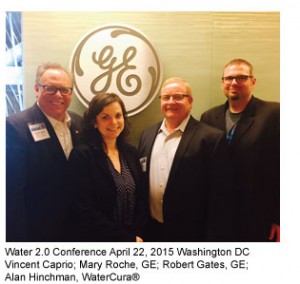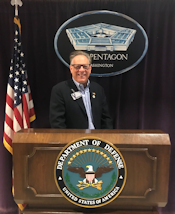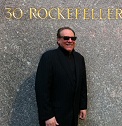The NanoBusiness Commercialization Association (NanoBCA) would like to congratulate the Office of Science and Technology Policy on the Nanotechnology-Inspired Grand Challenge for Future Computing. I would like to share with you the following announcement.
————————————————————————–
A Nanotechnology-Inspired Grand Challenge for Future Computing
By Lloyd Whitman, Randy Bryant, and Tom Kalil
October 20, 2015
Today, the White House is announcing a grand challenge to develop transformational computing capabilities by combining innovations in multiple scientific disciplines.
In June, the Office of Science and Technology Policy issued a Request for Information seeking suggestions for Nanotechnology-Inspired Grand Challenges for the Next Decade. After considering over 100 responses, OSTP is excited to announce the following grand challenge that addresses three Administration priorities—the National Nanotechnology Initiative, the National Strategic Computing Initiative (NSCI), and the BRAIN initiative:
Create a new type of computer that can proactively interpret and learn from data, solve unfamiliar problems using what it has learned, and operate with the energy efficiency of the human brain.
While it continues to be a national priority to advance conventional digital computing—which has been the engine of the information technology revolution—current technology falls far short of the human brain in terms of both the brain’s sensing and problem-solving abilities and its low power consumption. Many experts predict that fundamental physical limitations will prevent transistor technology from ever matching these twin characteristics. We are therefore challenging the nanotechnology and computer science communities to look beyond the decades-old approach to computing based on the Von Neumann architecture as implemented with transistor-based processors, and chart a new path that will continue the rapid pace of innovation beyond the next decade.
There are growing problems facing the Nation that the new computing capabilities envisioned in this challenge might address, from delivering individualized treatments for disease, to allowing advanced robots to work safely alongside people, to proactively identifying and blocking cyber intrusions. To meet this challenge, major breakthroughs are needed not only in the basic devices that store and process information and the amount of energy they require, but in the way a computer analyzes images, sounds, and patterns; interprets and learns from data; and identifies and solves problems.
Many of these breakthroughs will require new kinds of nanoscale devices and materials integrated into three-dimensional systems and may take a decade or more to achieve. These nanotechnology innovations will have to be developed in close coordination with new computer architectures, and will likely be informed by our growing understanding of the brain—a remarkable, fault-tolerant system that consumes less power than an incandescent light bulb.
Recent progress in developing novel, low-power methods of sensing and computation—including neuromorphic, magneto-electronic, and analog systems—combined with dramatic advances in neuroscience and cognitive sciences, lead us to believe that this ambitious challenge is now within our reach. The Federal government is driving many of these initial advances through programs such as Expeditions in Computing and Robust Intelligence at the National Science Foundation (NSF); Computational Cognition and Machine Intelligence, Nanoscale Computing Devices and Systems, DARPA SyNAPSE, DARPA UPSIDE, and DARPA STARnet (a public-private partnership with the Semiconductor Research Corporation) at the Department of Defense; and MICrONS at IARPA.
Some of the problems to be addressed by this grand challenge are highlighted in a recent report sponsored by the Semiconductor Industry Association and Semiconductor Research Corporation with support from NSF, and white papers released today by the IEEE and the Computing Community Consortium. Over the coming months, Federal agencies, professional societies, industry groups, and non-profit organizations will be coming together in workshops and other forums to determine the best path forward to address this grand challenge, with the first Department of Energy study group roundtable discussion planned for next week. Information about agency activities and other relevant resources are available at a new grand challenges portal at nano.gov.
We look forward to working with colleagues from across the nanotechnology, computer science, and neuroscience communities to transform future computing. If you’d like to help organize or participate in a planning activity, let us know at NNIChallenges@nnco.nano.gov.
Lloyd Whitman is Assistant Director for Nanotechnology and Advanced Materials at the White House Office of Science and Technology Policy.
Randy Bryant is Assistant Director for Information Technology Research and Development at the White House Office of Science and Technology Policy.
Tom Kalil is Deputy Director for Technology and Innovation at the White House Office of Science and Technology Policy.
Learn More:
Nanotechnology-Inspired Grand Challenges on nano.gov
A Call for Nanotechnology-Inspired Grand Challenges (OSTP Blog)
21st Century Grand Challenges
————————————————————————–
NANO NEWS
PEN Inc. Develops Graphene-Based Product for Use in Medical Imaging
NanoMech Launches Transport Division
HZO & Deutsche Telekom Join Again to Reveal the Water Resistant Tolino 3 HD eReader
IBM Reports Breakthrough on Carbon Nanotube Transistors
Mike Orcutt
MIT Technology Review
Could Nanotechnology Dramatically Reduce Clothing’s Environmental Impact?
Kathleen Webber
Chemistry and Materials
I read over 100 articles per week in regard to nanotechnology products. It appears that Time Magazine does not.
Here’s Why Nobody’s Talking About Nanotech Anymore
Kevin Kelleher
Time Magazine
10 years ago we heard that nanomaterials would be the new asbestos. Now we are told that bacon is the new asbestos.
Bacon’s as bad as asbestos? WHO thinks so: Report
Javier E. David
CNBC
————————————————————————–
UPCOMING EVENTS
1st Annual “Livingston Securities Advanced & Renewable Energy Summit”
November 2nd Denver, CO
For more information please email scott@livingstonsecurities.com
Water 2.0 Conference – Data Analytics for the Water Industry
November 18, 2015
Offices of Foley & Lardner, LLP
Washington, DC
Nanotechnology for Health Care
Winthrop Rockefeller Institute – Arts and Humanities
Wednesday, December 2, 2015 8:AM – Friday, December 4, 2015 10:AM (PT)
Morrilton, AR
————————————————————————–
CORPORATE MEMBERSHIP
Please join our roster of Corporate Members. For further information, please contact Vincent Caprio vincent@nanobca.org or 203-402-7200 to discuss.
————————————————————————–
INDIVIDUAL MEMBERSHIP
We encourage individuals interested in continuing our efforts to provide information in regard to emerging technologies to become Individual Members of the NanoBCA. Individual Membership includes participation on our monthly conference call. Our next call is on Thursday, November 19th at 2:PM ET. Click here to become a NanoBCA Individual Member. The annual Individual Membership fee is $150.
————————————————————————–
Once again, congratulations to the OSTP!






